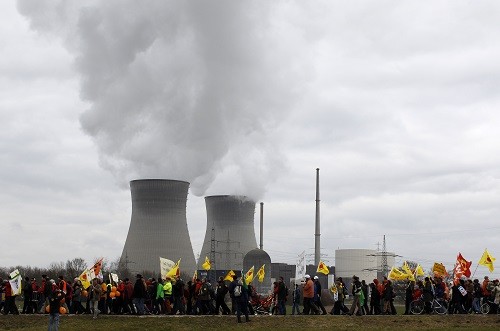
Recent studies by Community Environmental Monitoring (CEM), a program by The Other Media, found that the Cheyyur Ultra Mega Power Project (UMPP) would exponentially contaminate local water bodies, irrigation systems and adversely affect the agriculture of the region.
Cheyyur is located around 100 kilometres from Chennai and about 50 kilometres from Puducherry, in Tamil Nadu. Hence, experts believe that this could also go on to adversely affect the water supply in the urban areas.
"Thermal power plants are water abusers. Krishnapatnam, in Nellore district, which was as water rich as Cheyyur is now starving for water," said Shripad Dharmadhikari, a researcher on water and energy at Manthan Adhyayan Kendra. "Unfortunately, with coal-fired plants, Tamil Nadu will have to make a choice between water and electricity."
The study is titled Hydrological Implications of the 4000 MW coal-fired Ultra Mega Power Project in Cheyyur, Tamil Nadu by CEM. It goes on to say how the power plant would go on to contaminate the water resources in the region.
The study reveals that the Cheyyur UMPP would also spew a lot of harmful chemicals like arsenic, lead, mercury, uranium, cadmium, chromium, polonium, selenium and thorium. Most of these chemicals would, however, be emitted in very small quantities as they are contained in coal, which the power plant would burn. However, since the gross amount of coal burnt would be around 12-14 million tonnes every year, there could be long-term effects at least.
"If these are polluted, the local population, which depends on them for livelihood and drinking water needs, will be severely affected," Nityanand Jayaraman, environmental activist, and co-author of the study, told The Hindu.
Arsenic poisoning could happen in two ways - through food and water, although it is the latter that is considered more dangerous. If ingested, arsenic could cause skin lesions, patches on the palm, skin irritations, numbness, muscle cramping, and may even lead to skin cancer in the long run.
Lead poisoning, on the other hand, could be detrimental for children and could cause a number of neurological diseases like hypertension, convulsions and could lead to coma or death. It could also cause anaemia, immunotoxicity and be harmful for reproductive organs.
Uranium and mercury are two other chemicals that could be detrimental to the people of Cheyyur. While uranium has been directly linked with kidney failure, it could also disintegrate to form radium, which has been known to cause cancer. Meanwhile, mercury could be lethal to the human body, attacking the digestive, nervous and immune systems. It could also lead to toxicity of the kidney and also cause behavioural and neurological disorders to the human body.
The study finds that fly ash spewed by the power plant could be a huge carrier of all toxic waste. The fly ash is transmitted through a pipeline down to an ash pond. The study finds that more than 3,000 tonnes of fly ash would be emitted out of the Cheyyur UMPP everyday. The residue chemicals from the fly ash could seep into the ground, and affect agriculture and irrigation. It could also contaminate the water sources around the region, getting into the aquatic food chain, rendering the fishing industries redundant.
"Site selection for the power plant has completely ignored the project's impact on Cheyyur's rich surface water resources such as eris (tanks) and ponds and interconnected networks of streams," said S Janakarajan Professorial associate at the School of Oriental and African Studies (SOAS), University of London, and co-author of the study.

















